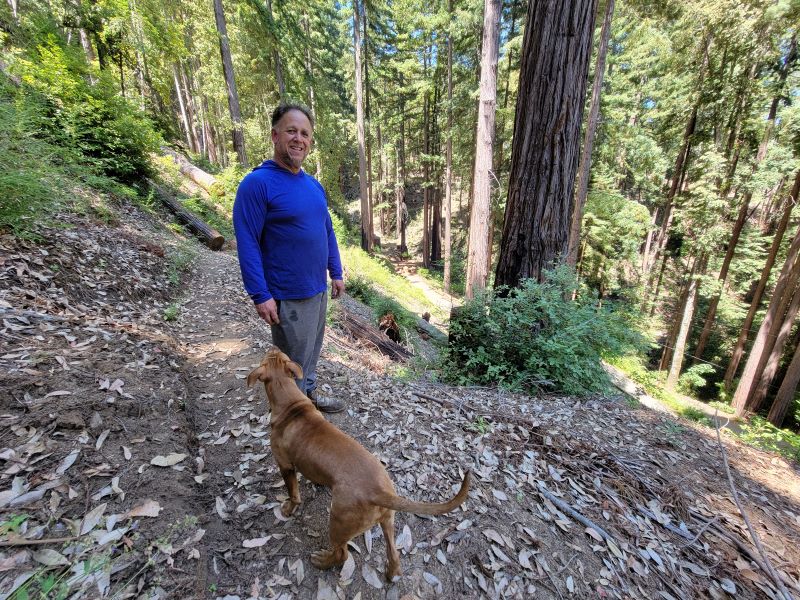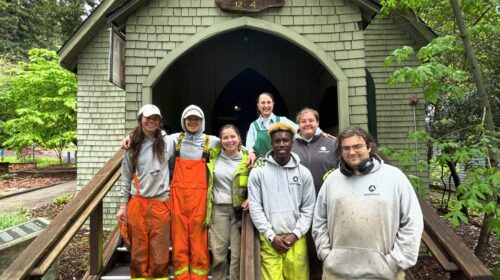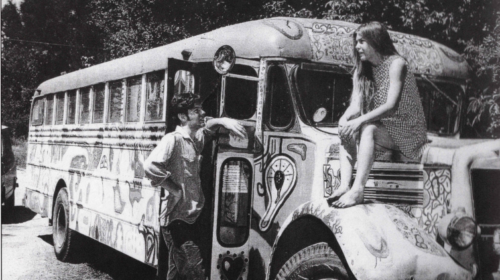Proving Ground: Eric Hammer Navigates the Rebuild Process
By Julie Horner
“From a percentage basis it’s terrible, it’s ungodly expensive,” Eric Hammer said. A longtime green builder and contractor, the Brookdale resident lost the 100-year old family home in the 2020 CZU fire. The homestead dates to 1904. “This was a historic house, one of the oldest standing structures in the valley. Judge Logan and my grandfather put together the development plans at a time when there were very few residents up here,” he said. Now Hammer is using an advisor to help make sure he’s getting the most out of his insurance policy and still muddling through the permitting process hopeful to rebuild.
Goat Tracks
Located on a steep, narrow ribbon of privately maintained road, one of the first hurdles for the Hammer property is ingress and egress. From a safety perspective, CalFire criteria calls for two-way traffic, he said. The roadway must be able to be accessed by emergency services as well as function as a route to safely evacuate. Roads that are historically in place on the general plan with 30-foot right of ways would ideally include pull outs every 500 feet, but there are variances in place through the County that allow road width to be decreased from state standards. So far he’s been approved by local fire for turnarounds. “When Brookdale Commons was presented as a development to the County, the roadways were offered to the County as part of the plan. The County didn’t accept the roads, so they were donated for public access. “The County has the oversight, but they’re maintained privately per state code, obligating those of us who have properties adjacent to the roadways to maintain them as a thoroughfare. Or a goat track.” He’d like to see grant money come in to get these access roads properly mapped and improved.
Permit This
Hammer is also running into roadblocks around environmental requirements. “It’s not a county owned property, so it’s a nightmare of what to get permitting for,” Hammer said. He must be able to prove that a house rebuilt in the original 1400 square foot footprint will withstand earth movement, quakes and debris flow. The replacement “environmental” septic system has already been deemed inadequate. “They want a certain amount of clearances,” he said. “If you live on a hillside, they want the tank 50 feet from a cut or slope. With soils and geology and debris flow, it’s 25-30 thousand before you can start the work — and you have to build a moat around your house, a deflection wall — that’s a couple hundred thousand not in your normal building costs.” Hammer said that most who live in the mountains acknowledge that there is risk from fire and floods but most will also say that they enjoy this style of living. “We can’t build something to fight mother nature, she’s going to win every time.”
Doing the math, it will cost more than a million dollars to rebuild. “Nobody was insured for 700 per sq ft. A typical house is in the 800s around here; your cost to rebuild is more than the cost of the house in the market. Makes it impossible. It seems as if they don’t want anybody living out in the sticks.”
SLV Strong
Hammer advocates for proactive forest management and for being prepared on the front end of the next crisis. “There needs to be a funded program to help homeowners maintain their properties. Everyone should have resources at home so that emergency services don’t get overtaxed.” Hammer envisions a response network that recognizes the know-how of trained volunteer firefighters and mountain-savvy tree professionals in planned collaboration with larger response agencies. He sees monthly or quarterly meetings with the county’s offices of emergency services and the installation of community captains who can help coordinate neighborhood resources. “It was a shit show up here. There was no communication. They should have been utilizing local talent,” he said, noting that the Santa Cruz Mountains “have some of the best educated search and rescue teams, strike force teams, and local volunteers. People need to be working together all year round up here.”
Julie Horner writes about the people and culture of the Santa Cruz Mountains. Reach out to Julie at leap2three@gmail.com.
Photo by Julie Horner
Have something to contribute? The San Lorenzo Valley Post welcomes your story ideas, photos, and letters. Send us an email.




